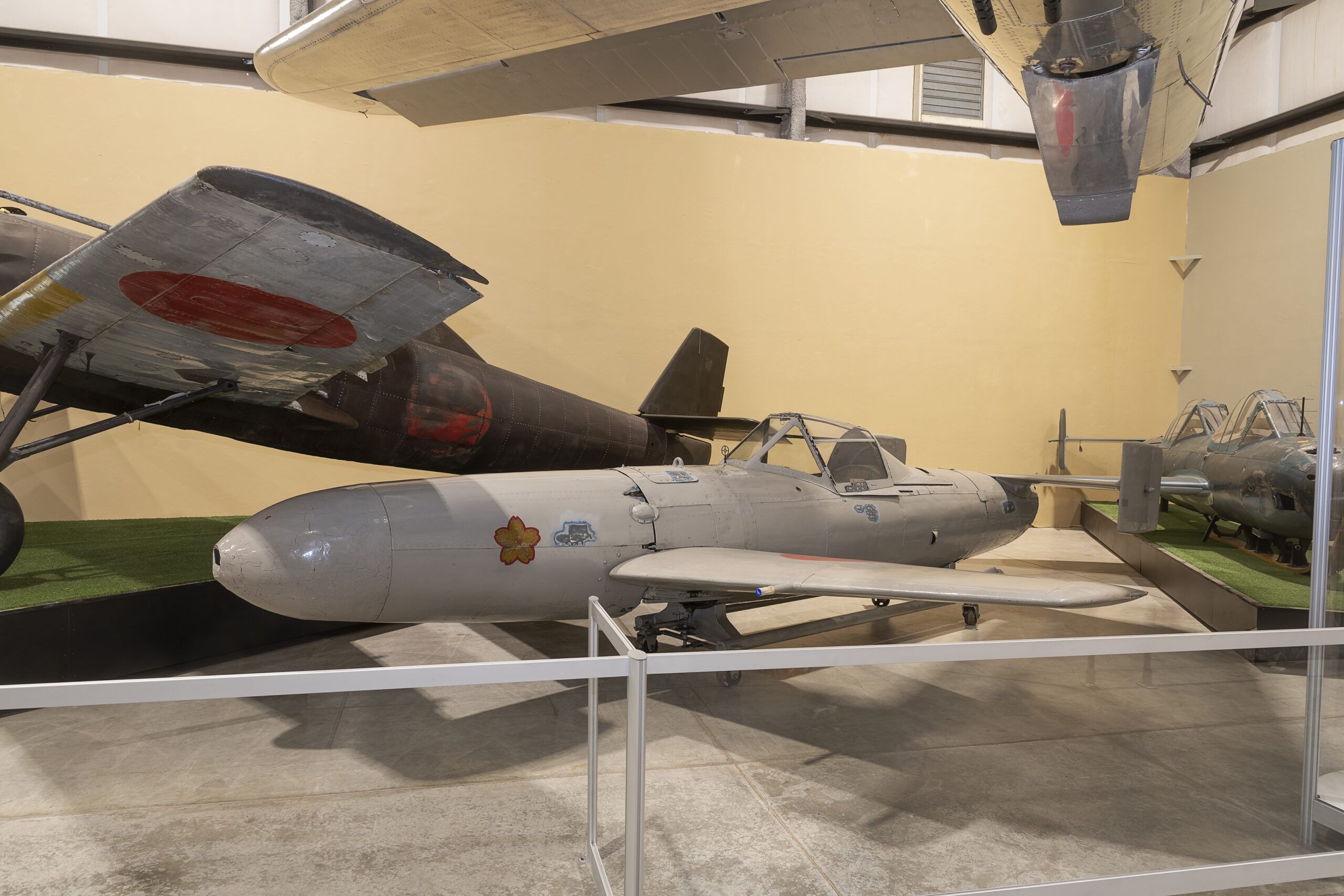YOKOSUKA MXY7 OHKA MODEL 11

The Ohka (Cherry Blossom) is a winged human guided anti-ship bomb developed by the Japanese Navy in 1944 for attacks against Allied warships. The operational version of the weapon contained a 2,600 pound bomb and a single pilot. It was carried to within twenty miles of its target by a G4M “Betty” bomber. After release the pilot would guide the bomb toward the target. At this point three rockets in the tail of the bomb were fired to increase the speed of the bomb to well over 600 miles per hour in a dive. Being a suicide mission, the pilot remained with the bomb until it detonated.
The Ohka was first used against American forces in April 1945 during the invasion of Okinawa. A total of seven ships were hit by Ohka bombs, three of which sank. The success of the Ohka was limited by the vulnerability of the “Bettys” carrying them. Many Ohkas were destroyed or released short of target when their motherships were destroyed by navy fighter aircraft.
Service History
This MXY7 was built by the Dai-ichi Kaigun Kokusho Kasumigaura (1st Naval Air Depot – Kasumigaura) during December 1944. In 1945 it was one of four Ohkas brought back to the United Kingdom for evaluation. It is now here on loan from the Royal Air Force Museum.
Wingspan | 16 ft 10 in. |
Length | 19 ft 11in. |
Height | 3 ft 10 in. |
Weight | 4,718 lbs (loaded) |
Maximum Speed | 403 MPH in level flight |
Service Ceiling | 27,066 ft |
Range | 23 miles |
Engines | Three Type 4 Mark 1 Model 20 solid-propellant rocket with 573 pounds of thrust each |
Crew | 1 |
Manufacturer
Yokosuka
Markings
Imperial Japanese Navy, 1945
Designation
MXY7 Ohka
Serial Number
1174